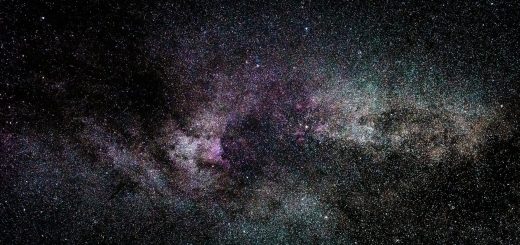The Legend of Lono and the Makahiki Festival: Hawaiian Harvest Celebration

Before diving in, please note: This post is for informational purposes only. If you’d like to know more about how we approach topics, feel free to check out our friendly Disclaimer Page.
Hey there, amazing readers! 🖐️ Just a quick note: yes, we know there are a lot of ads here. Trust us, we get it—it’s not the prettiest look, but they help us keep this blog alive and kicking. Those pesky little ads cover the costs of all the behind-the-scenes magic, from hosting and tech stuff to creating content we hope you’ll love.
We’re committed to delivering quality posts, and your support (even just sticking around despite the ads) means everything to us. So, bear with us, and thanks for helping us keep the good vibes rolling. Now, on to the fun stuff! 😉
TRANSLATE BUTTON AT THE END OF THE ARTICLE
Overview
The Makahiki Festival is a traditional Hawaiian harvest celebration that pays homage to the god Lono, the deity of fertility and agriculture.
This grand event takes place annually and marks the beginning of the harvest season in Hawaii.
The festival is deeply rooted in ancient Hawaiian traditions and is characterized by a series of rituals, ceremonies, sports competitions, offerings, and feasts.
The Makahiki Festival holds significant cultural importance as it symbolizes renewal and abundance in Hawaiian society.
Throughout the years, the festival has evolved to blend traditional customs with modern elements, ensuring the preservation of Hawaiian culture.
This article delves into the fascinating legend of Lono and explores the various aspects of the Makahiki Festival.
The Legend of Lono: Hawaiian God of Fertility and Agriculture
In Hawaiian mythology, Lono is revered as the god of fertility, agriculture, and peace.
According to legend, Lono descended to Earth from the heavens on a rainbow, bringing with him abundant harvests and prosperity.
He is often depicted with a long beard, a white feathered cape, and a staff adorned with feathers.
Lono is believed to oversee the growth of crops, ensuring bountiful harvests for the Hawaiian people.
The Makahiki Festival: A Time of Celebration and Harvest
The Makahiki Festival is a period of four months, typically starting in November and lasting until February or March, during which Hawaiians celebrate the abundance of their harvests.
It is a time of joy, feasting, and friendly competitions.
The festival marks the transition from the rainy season to the dry season when crops flourish, and the land is teeming with life.
Origins of the Makahiki: Ancient Hawaiian Traditions
The origins of the Makahiki Festival can be traced back to ancient Hawaiian traditions.
It is believed that the festival was introduced to the Hawaiian islands by the Polynesians who settled there centuries ago.
The festival shares similarities with other Polynesian harvest celebrations, and its roots can be traced back to the ancient Polynesian god known as Makaliʻi.
Makahiki: The Annual Season for Paying Homage to Lono
During the Makahiki Festival, it is believed that Lono returns to the Hawaiian islands to bless the land with fertility and abundance.
The festival serves as a way for the Hawaiian people to pay homage to Lono, express gratitude for the bountiful harvest, and seek his continued blessings for the upcoming year.
The arrival of Lono is marked by a series of rituals and ceremonies that are performed to honor and welcome the god.
Rituals and Ceremonies: Honoring Lono during the Makahiki
The Makahiki Festival is characterized by various rituals and ceremonies that are performed to honor Lono and celebrate the abundance of the harvest.
One of the key ceremonies is the raising of the Lono pole, a tall wooden pole adorned with feathers and symbols representing Lono.
This pole serves as a physical manifestation of the god and is believed to attract his presence.
Another significant ritual is the offering of ʻōhiʻa lehua branches to Lono.
These branches, symbolizing new growth and abundance, are presented at altars dedicated to the god.
Additionally, a traditional kapu, or sacred prohibition, is observed during the festival.
This kapu restricts certain activities and behaviors as a sign of respect for Lono.
The Makahiki Procession: A Grand Display of Hawaiian Culture
One of the highlights of the Makahiki Festival is the grand procession that takes place to welcome Lono.
The procession, known as the Makahiki march, features participants dressed in traditional Hawaiian attire, carrying offerings, and playing musical instruments.
The march winds its way through villages, symbolizing the journey of Lono as he returns to bless the land.
Sports and Games: Competitions during the Makahiki Festival
Sports and games play a significant role in the Makahiki Festival, fostering friendly competition and community spirit.
Traditional Hawaiian sports such as ʻulu maika, a game involving rolling stones, and moa paheʻe, a dart sliding game, are played during the festival.
These games test strength, agility, and skill and provide entertainment for both participants and spectators.
Offerings and Feasts: Abundance and Sharing of Harvest
Central to the Makahiki Festival is the concept of abundance and sharing.
Offerings of the first fruits and crops of the harvest are made to Lono.
These offerings, known as hoʻokupu, are presented on altars throughout the island.
The food is later distributed among the community, ensuring that everyone shares in the abundance of the harvest.
In addition to the offerings, elaborate feasts are prepared during the festival.
Traditional Hawaiian foods such as poi, lūʻau (cooked taro leaves), and roasted pig are enjoyed by all.
These feasts serve as a way to celebrate the abundance of the harvest and foster a sense of community and togetherness.
Cultural Significance: Makahiki as a Time for Renewal
The Makahiki Festival holds immense cultural significance for the Hawaiian people.
It is considered a time of renewal, not just for the land but also for the community and individuals.
The festival serves as an opportunity for reflection, gratitude, and the strengthening of community bonds.
It is a time to celebrate the interconnectedness between the people, the land, and the gods.
Traditional Makahiki Foods: Delicacies for the Celebrations
Traditional Hawaiian foods play a vital role in the Makahiki Festival.
Poi, a staple food made from pounded taro root, is often consumed during the festival.
It is a versatile food that can be eaten on its own or used as a dip for other dishes.
Another traditional delicacy is lūʻau, cooked taro leaves wrapped around meat or fish.
The leaves are cooked until tender, resulting in a flavorful and nutritious dish.
Roasted pig, known as kalua pig, is also a popular dish during the Makahiki Festival.
The pig is traditionally cooked in an imu, an underground oven, which imparts a smoky and tender flavor to the meat.
Other dishes that may be enjoyed during the festival include haupia (coconut pudding), laulau (meat and fish wrapped in taro leaves), and various types of fish and seafood.
Modern Makahiki Celebrations: Blending Tradition and Modernity
While the Makahiki Festival has its roots in ancient traditions, it has also evolved to incorporate modern elements.
Today, the festival is celebrated across the Hawaiian islands, with various communities and organizations organizing their own events.
These modern celebrations often include a mix of traditional rituals, sports competitions, cultural performances, and educational activities.
In some instances, the Makahiki Festival has become an opportunity for Hawaiians to raise awareness about environmental conservation and sustainable farming practices.
The festival serves as a reminder of the importance of preserving the land and its resources for future generations.
Preserving Hawaiian Culture: The Continuity of the Makahiki Festival
The Makahiki Festival plays a crucial role in preserving Hawaiian culture and traditions.
It serves as a reminder of the deep connection between the Hawaiian people, the land, and the gods.
By continuing to celebrate the Makahiki Festival, Hawaiians ensure that their cultural heritage remains alive and relevant.
Efforts are being made to pass down the knowledge and practices associated with the festival to future generations.
Schools, cultural organizations, and community groups actively engage in teaching the traditions and customs of the Makahiki Festival.
This ensures that the festival will continue to be celebrated for years to come, preserving the rich cultural heritage of Hawaii.
Conclusion
The Makahiki Festival, deeply rooted in ancient Hawaiian traditions, is a time of celebration and harvest.
It honors the god Lono, the deity of fertility and agriculture, and symbolizes renewal and abundance in Hawaiian culture.
Through rituals, ceremonies, sports competitions, offerings, and feasts, Hawaiians express gratitude for the bountiful harvest and seek blessings for the upcoming year.
The festival blends traditional customs with modern elements, ensuring the continuity of Hawaiian culture.
By preserving the Makahiki Festival, Hawaiians keep their cultural heritage alive and pass it on to future generations.

The Enlightenment Journey is a remarkable collection of writings authored by a distinguished group of experts in the fields of spirituality, new age, and esoteric knowledge.
This anthology features a diverse assembly of well-experienced authors who bring their profound insights and credible perspectives to the forefront.
Each contributor possesses a wealth of knowledge and wisdom, making them authorities in their respective domains.
Together, they offer readers a transformative journey into the realms of spiritual growth, self-discovery, and esoteric enlightenment.
The Enlightenment Journey is a testament to the collective expertise of these luminaries, providing readers with a rich tapestry of ideas and information to illuminate their spiritual path.
Our Diverse Expertise 🌟
While our primary focus is on spirituality and esotericism, we are equally passionate about exploring a wide range of other topics and niches 🌍📚. Our experienced team is dedicated to delivering high-quality, informative content across various subjects ✨.
To ensure we provide the most accurate and valuable insights, we collaborate with trusted experts in their respective domains 🧑🏫👩🏫. This allows us to offer well-rounded perspectives and knowledge to our readers.
Our blog originally focused on spirituality and metaphysics, but we’ve since expanded to cover a wide range of niches. Don’t worry—we continue to publish a lot of articles on spirituality! Frequently visit our blog to explore our diverse content and stay tuned for more insightful reads.







